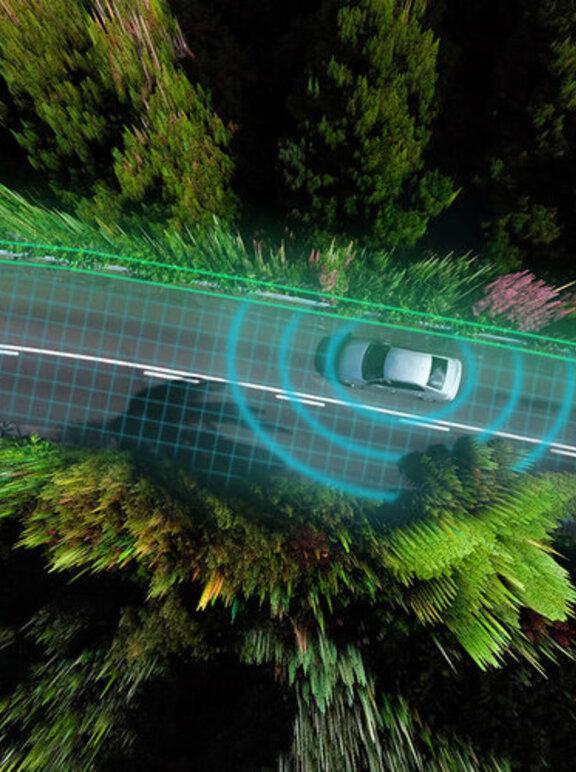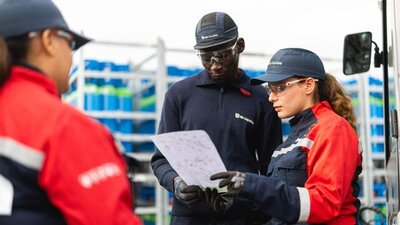Autonomous cars have long been considered the holy grail of automotive development. Yet for all the tantalising developments in autonomous driving in recent years and even some fully-functional prototypes, vehicles which do not require any human involvement are still some way off. Nevertheless, steps towards at least partially autonomous operation are good news for AirLiquide’s customers in the semiconductor industry.
As somebody whose key role is to keep abreast of technological developments, Benjamin Jurcik, Chief Technology Officer in the Electronics Business Line at Air Liquide, routinely dissects some of the more breathless news stories and over-ambitious press releases in circulation about autonomous driving. “Driverless cars? Sure, there are some test vehicles out there without drivers inside them – but they’re still being monitored from a control room. By a human. Visually, they look autonomous, but they’re not.” So how far off does he think a truly driverless vehicle is? “There definitely won’t be a fully autonomous car within five years. Probably not within 10, either.”
Yet that doesn’t stop Jurcik from thinking about smart transportation. “There won’t be a sudden step-change from the kind of vehicles we have now to fully driverless cars. But there are all sorts of driver-assistance functions already operational which offer safety and comfort benefits. Their number and scope will increase in the coming years as part of the move towards autonomous transportation.”
Jurcik cites cruise control and parking assistance as two of the most widespread functions. Additionally, vehicles are already becoming more connected – and connectivity is a key prerequisite to autonomous driving. “An autonomous vehicle needs to communicate both with other vehicles and with surrounding infrastructure,” explains Jurcik. The fact that the market for connected cars was already at an estimated $53.9 billion in 2020 and is set to reach $166 billion by 2025 shows the speed at which the building blocks of autonomous driving are currently being laid down.
What are autonomous and self-driving cars?
- L0: No automation
- L1: Driver assistance
- L2: Partial automation
- L3: Conditional automation
- L4: High automation
- L5: Full automation
For more information, see our detailed article on autonomous driving technology.
“The building blocks aren’t just in the car pool, though,” cautions Jurcik. “What is currently underestimated is the extent to which autonomous driving functions depend on the availability of data in the environment.” Jurcik gives traffic lights as an example: humans see them as being red or green, but machines have trouble recognizing this difference reliably in real-world situations. “And even if they can do it successfully, there still needs to be a back-up.”
Driverless cars need talking roads
Benjamin Jurcik
Chief Technology Officer in the Electronics Business Line at Air Liquide
“These vehicles are not, however, free to roam.” That will be both a question of smart infrastructure – i.e. traffic lights, freeway exits, and barriers that talk to autonomous cars in a language they can understand – but also of connectivity: “5G coverage is the absolute minimum technical prerequisite to operating driverless vehicles.”
“So what we will see as time goes on,” predicts Jurcik, “is a spectrum of different levels of autonomy in different places.” Already today, there are older, wholly manual vehicles on the road that drive alongside modern cars with automatic transmission and newer models with some limited autonomous functions. “In the future,” says Jurcik with a wry smile, “you’ll have everything from enthusiasts taking out their old sports cars and motorcycles through to wholly driverless shuttles – all on the same road at the same time.”
That, by the way, is why Jurcik doesn’t expect us to see the kind of ‘human exclusion zones’ familiar in automated warehouse environments out on the open road. “Essentially, autonomous driving means trying to replicate the multitudinous functions of the human brain. That means that driverless vehicles won’t be able to rely on a single point of information, but will have to do what humans do: reconcile various inputs to make a judgement. It’s hugely complex – and will require huge amounts of computing power.”
Autonomous driving will drive up chip demand
In addition to on-board processing power – “Potentially over ten times the amount available in vehicles today,” estimates Jurcik – driverless cars will also need real-time sensors to provide these processors with location data and other information. Real-time digital communication with surrounding vehicles and infrastructure will be imperative, and actuators will be needed to carry out functions like steering, acceleration, and braking.
All of this means a rapid rise in the amount of chips needed in vehicles. “This is good news for Air Liquide, of course,” explains Jurcik, “as increased demand for our clients in the semiconductor industry feeds through to us. “What is more,” continues Jurcik, “driver assistance and, eventually, autonomous functions will help us enhance our own logistics.” In this way, Air Liquide will be both a driving force behind developments in autonomous vehicles and a beneficiary of these developments.




